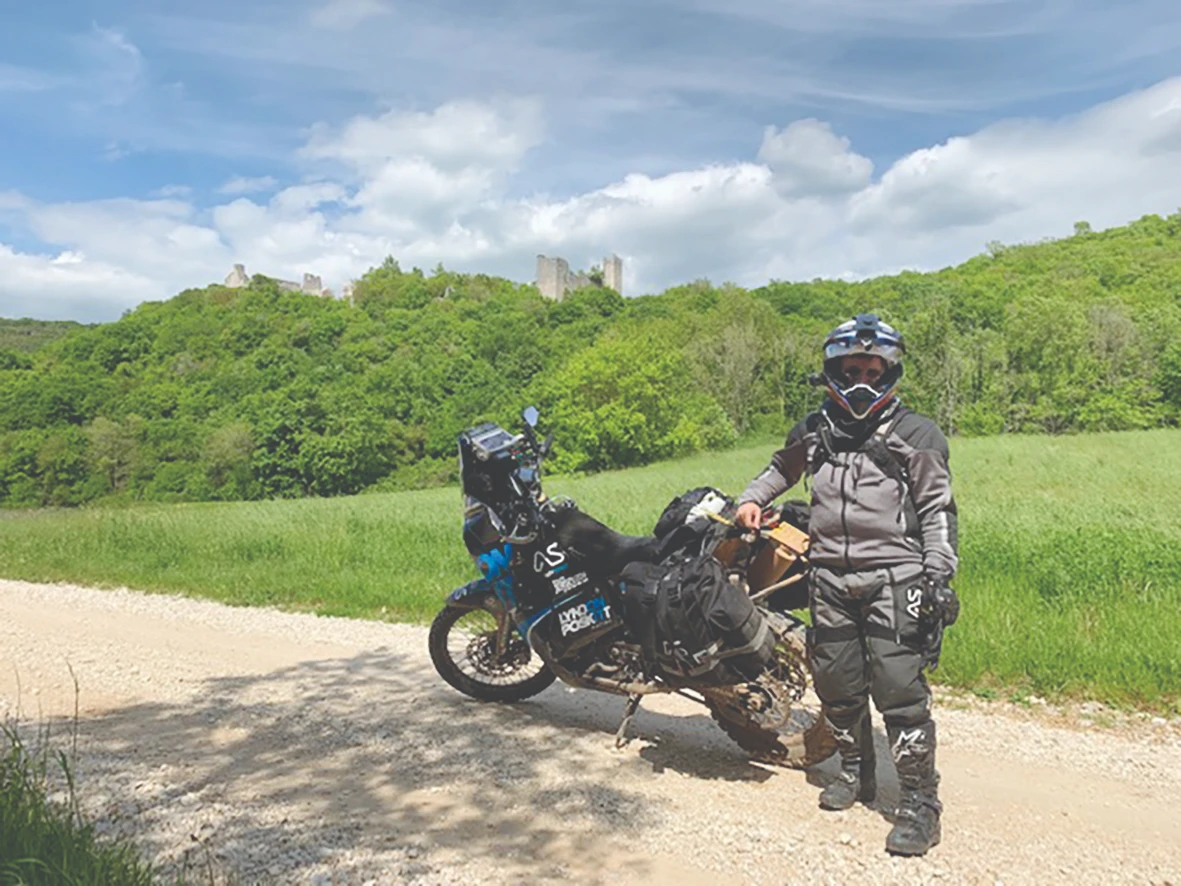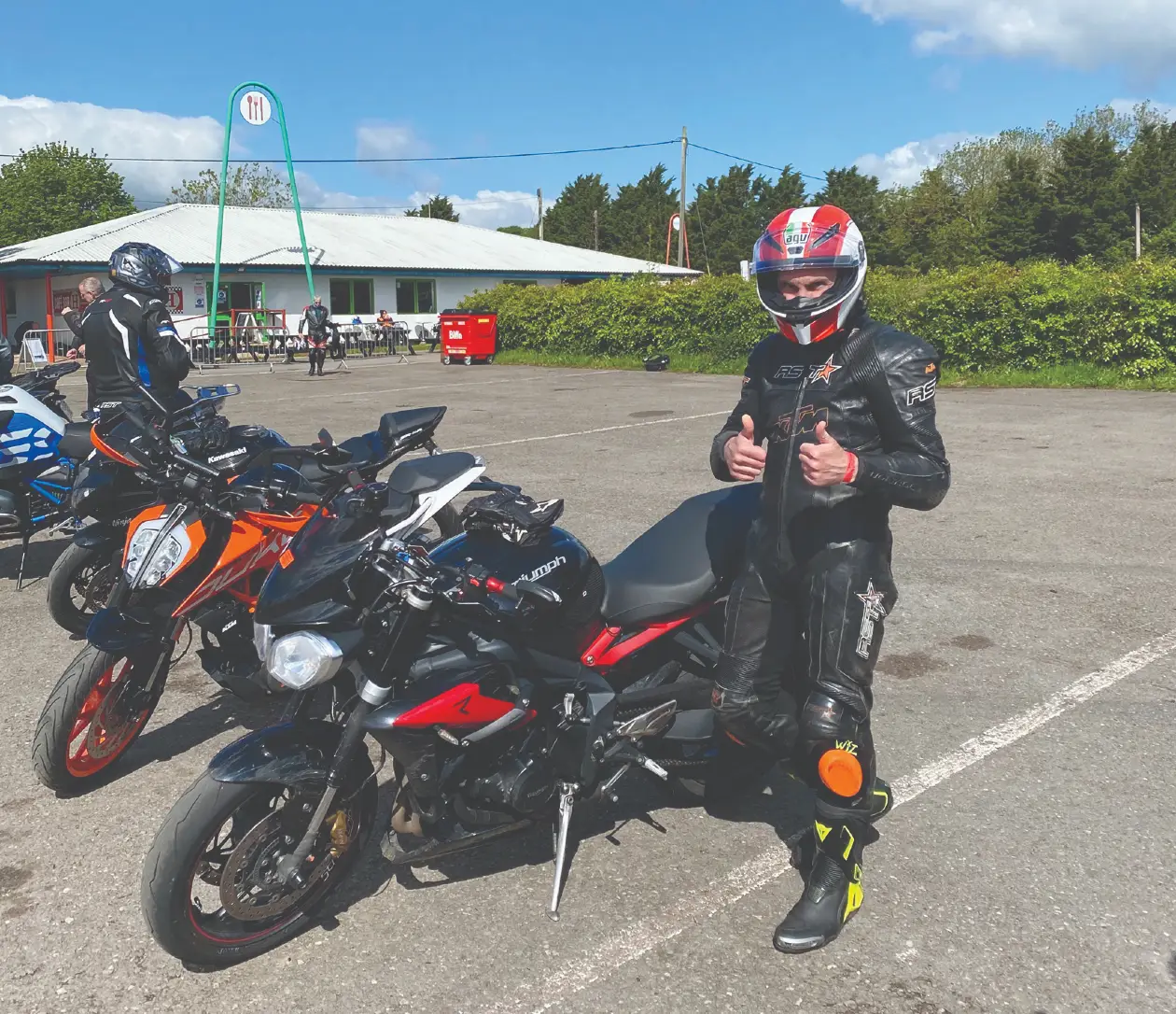Intermot, the Cologne International Motorcycle Show, has one key difference when compared to the other European bike shows – it only runs every other year. For one reason or another I’ve kept missing my window of opportunity, but this time I was finally able to line things up and book my tickets.
A short flight and a couple of nights at a local hotel are one option, but naturally I chose to take two extra days and use the bike instead. The Mosel and Eiffel are fantastic riding at any time of year, but in Autumn the scenery takes on an even more spectacular hue, with reds and oranges joining in amongst the stereotypical evergreens.
The show itself is broken up into two parts; a whole third of the floorspace was dedicated to a massive exhibition of custom bikes and culture, with beard trimming & haircuts offered alongside countless modified bikes and accessory stalls. The remaining four halls were dominated by motorcycle manufacturers large and small, with everything from oil, clothing and parts suppliers squeezed in between them.
New announcements were few and far between, with most manufacturers saving their high-profile launches for EICMA or their own carefully-controlled press events. Instead, shows like this, or our more local Motorcycle Live! serve as an opportunity to see and sit on every possible bike in one place, free from the presumptive interruptions of sales staff. So rather than working my way through the major players and simply listing what’s new, I’m going to take a slightly different tack this time.
The club is fortunate to have attracted many new members in the last few years, and I myself have had a number of people approach me for purchasing advice. Experienced motorcyclists know what’s available, have formed their own preferences over years of riding and sampled a broad cross-section of machinery. But what if you’re new to riding, passed your test recently and are riding a CBR600F purely because it caught your eye at a local dealer? A motorcycle show is the perfect opportunity to see the full range of motorcycles in one place, and be reminded of the sheer scale and variety of two-wheeled transportation.
So let’s take a quick, broad-brush scan of the main genres of motorcycle on show in Cologne, and remind ourselves what we might want to take a look at when heading to Motorcycle Live! in the coming week. I’ll pick out a recommended starting point for you newcomers, as well as a more left-field alternative for those that like to live more dangerously than the rest of us. But I should stress that nothing beats a test ride, and comparing the competition is the only way to figure out exactly which variant you will personally prefer.
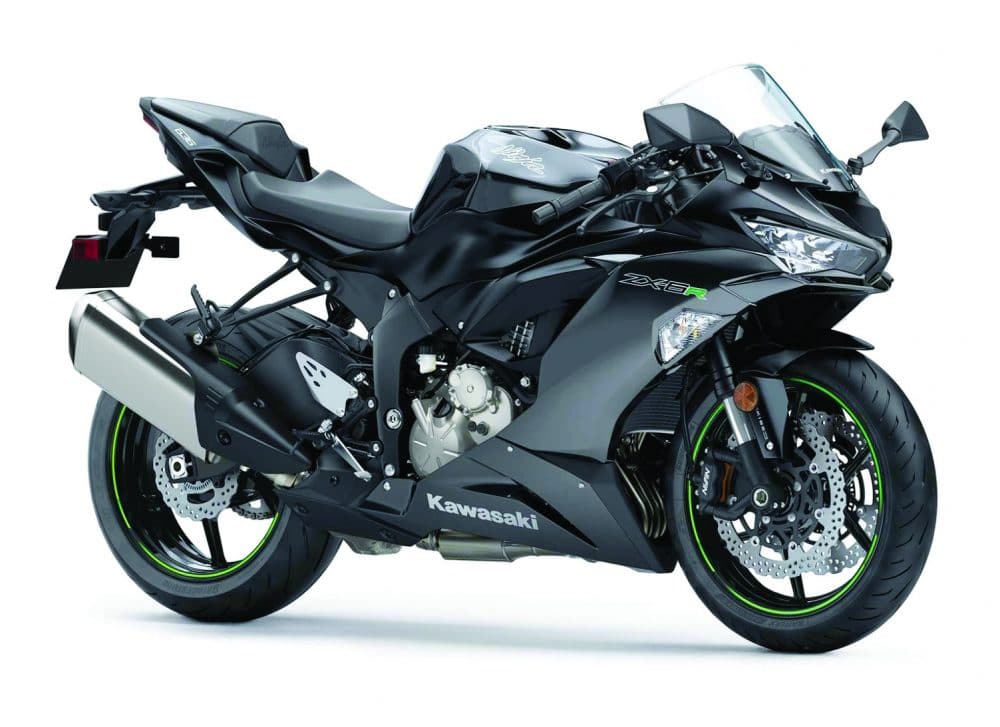
Kawasaki ZX-6R
Supersports
Derived from a desire for maximum performance, a modern sportsbike sacrifices almost everything in the pursuit of getting the rider around their local racetrack at the maximum possible speed. Comfort, tank range, luggage capacity – any semblance of practicality is entirely secondary, which often means that on-road riding is severely compromised.
And let’s face it, if you’re reading this, then most of your riding probably happens on potholed public tarmac. Twenty years ago, sportsbikes were the only way to get half-way decent engine, braking and suspension performance, and more road-focused designs meant that the compromises weren’t half as drastic. But in 2018, the stands are full of bikes of every stripe that could thrash a GSX-R from a decade ago along any stretch of road you care to mention.
There’s certainly a purity of sensation that comes from riding a sportsbike; that feeling that your hands are gripping the front axle, not a set of clip-ons a half-metre further up. But don’t kid yourself that you “need” one for road riding – not anymore. Buy one because you love how they look, you love how they sound, and are addicted to that startling top-end rush that only comes from a screaming inline-four at 12,000RPM and above. Buy one because you want one; squeeze into your leathers and pretend you’re winning the TT on your way to work.
The bike to beat remains BMW’s S1000RR, and rumours of an impending update mean that deals are doubtlessly available. If you fancy something more exotic, Ducati’s recently-released Panigale V4 will be sure to delight and terrify in equal measure.
Naked
Motorcycling is all about the sensations you can experience when you’re out in the elements. The sights, the smells, the feel of the wind tugging on your clothing and the mechanical sounds and sensations of your bike beneath you. While any motorcycle devoid of fairing is technically “naked”, this genre of biking tends to refer to performance-oriented machines with more upright riding positions and minimal wind protection.
Time was that manufacturers would simply tear the plastics off their latest sportsbike, replace the clip-ons with handlebars, soften the suspension and de-tune the engine for a less “focused” power delivery. These days, the naked bike is just as likely to be an orphan, designed and built from the ground up to be a performance street machine.
And therein lies the truth of it; the differences here mean that naked bikes are generally much better road bikes, their lack of wind protection only becoming an issue when at very high speeds or on a racetrack, where their erstwhile cousins come into their own. Handlebars are better for slower, tighter roads than fast, flowing corners, and the comfier suspension can better deal with the imperfect tarmac we face on a daily basis. They’re not as pretty as sportsbikes though…
Recommendations here are tough as, unlike the ultra-focused sportsbike world, there is real breadth to the naked category. I’ve personally got a soft spot for the Suzuki SV650, especially now that it’s finally got the upgraded front brakes it’s always deserved. The Triumph Street Triple is something of a benchmark, although I resent the 17kg weight gain that accompanied last year’s redesign. The left-field suggestion would be the new KTM Duke 790, the Austrian brand’s first parallel twin and, apparently, an absolute riot to ride.
Adventure-Tourers
What do you buy if you want to circumnavigate the globe, riding through swamps, jungles, deserts and tundra? You buy a Honda CRF250L. There; you’re welcome. What you don’t buy is a quarter-ton of gadget-laden German behemoth and pretend it’s a dirt bike.
It’s impossible to discuss the Adventure segment without BMW’s synonymous R1200GS, now swollen to 1,250cc in its latest iteration. The rise of the Adventure bike is the fall of the sportsbike, as people who bought into the racing fantasy decided that the round-the-world fantasy was a more comfortable and surprisingly practical alternative. The two-wheeled equivalent of a Range Rover Sport, no true off-road enthusiast would ever consider one seriously, even if their dirt-oriented performance is often surprisingly impressive. Instead, the attraction for most lies in how good they are at pretty much everything else.
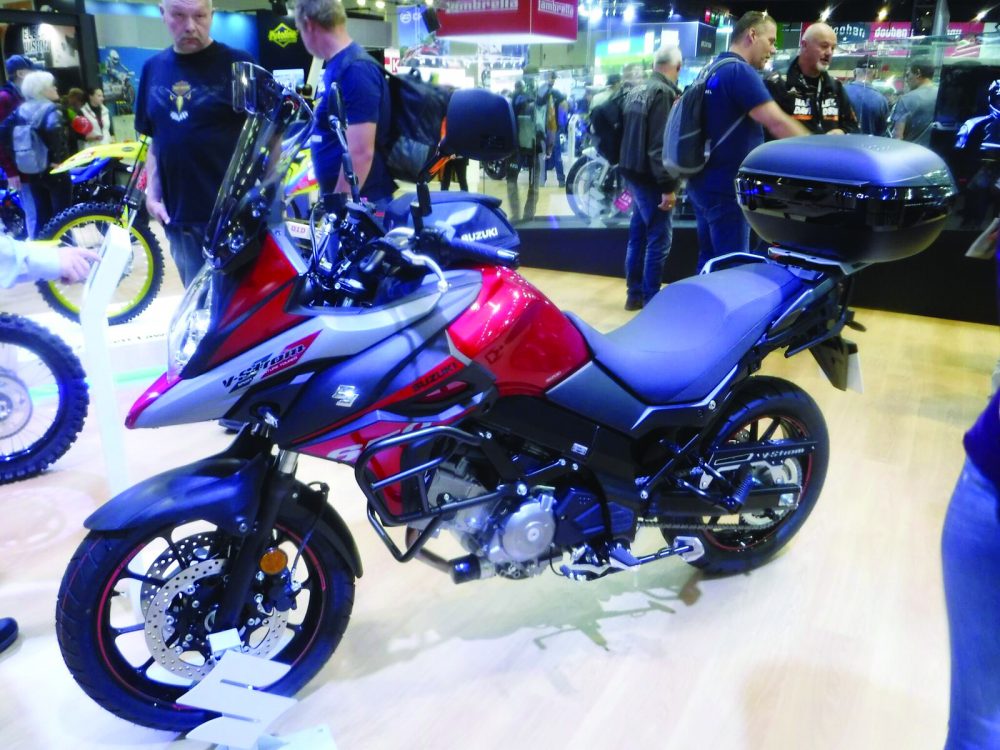
Suzuki V-Strom
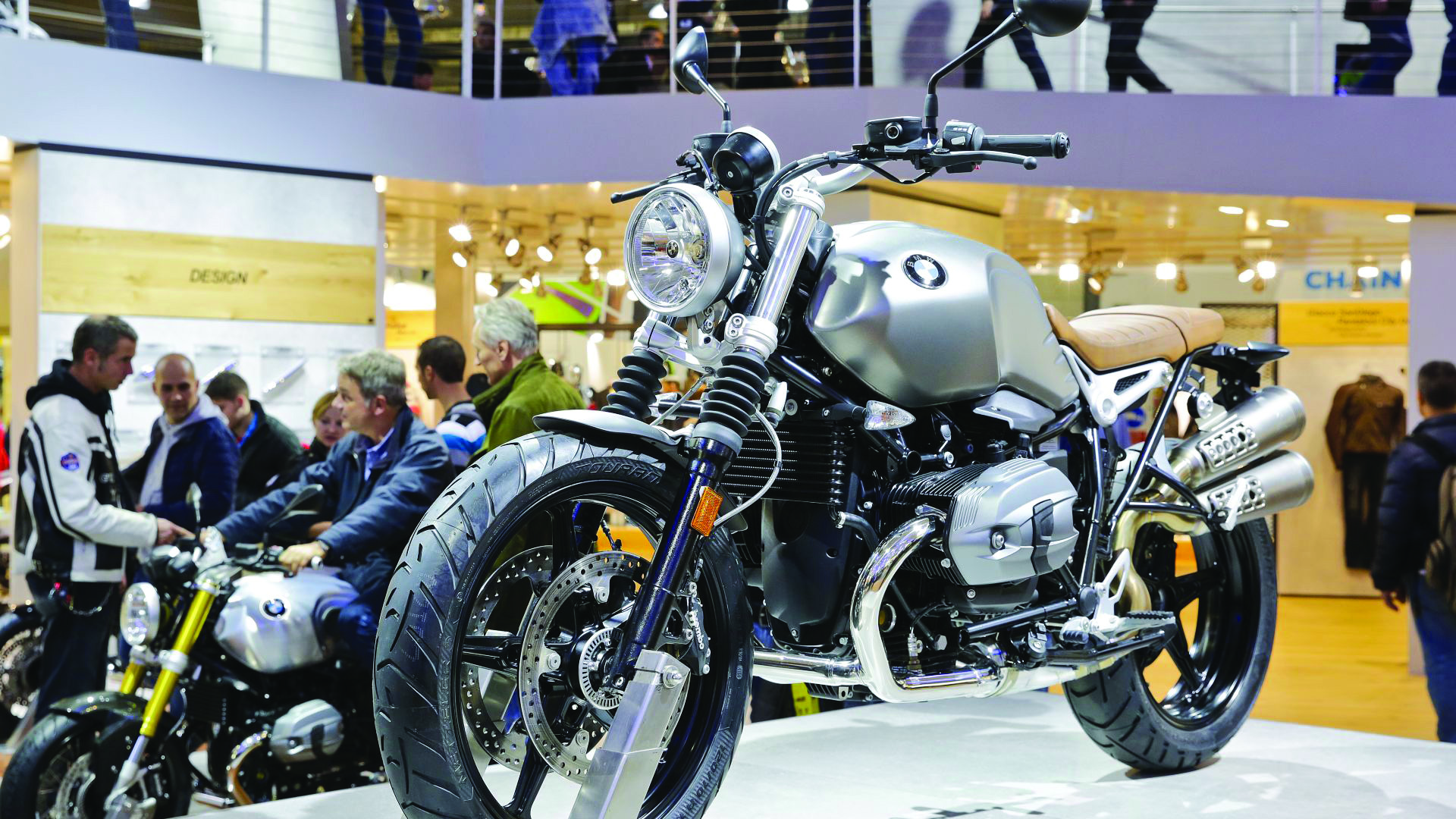
BMW R nineT
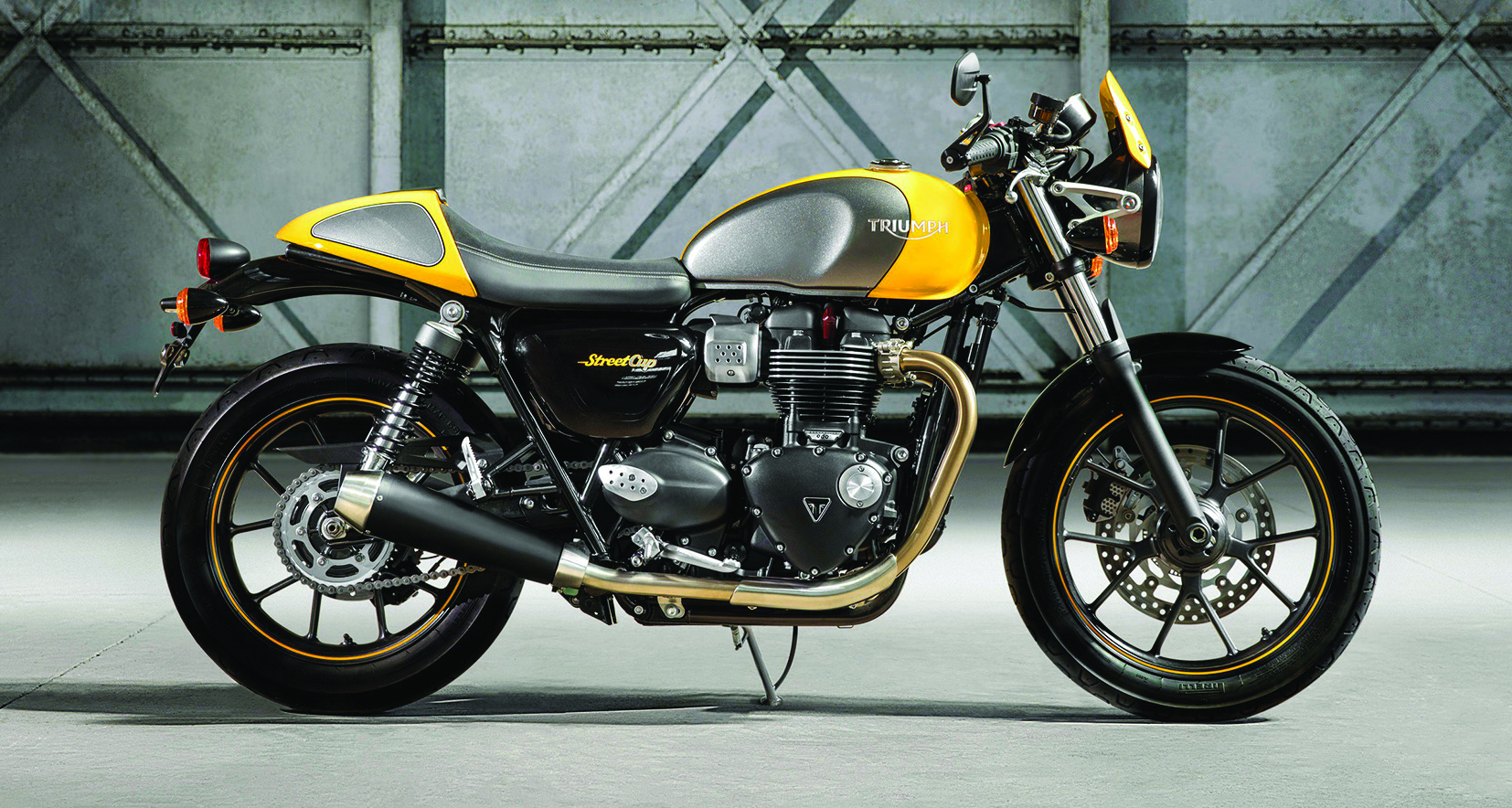
Triumph Street Cup
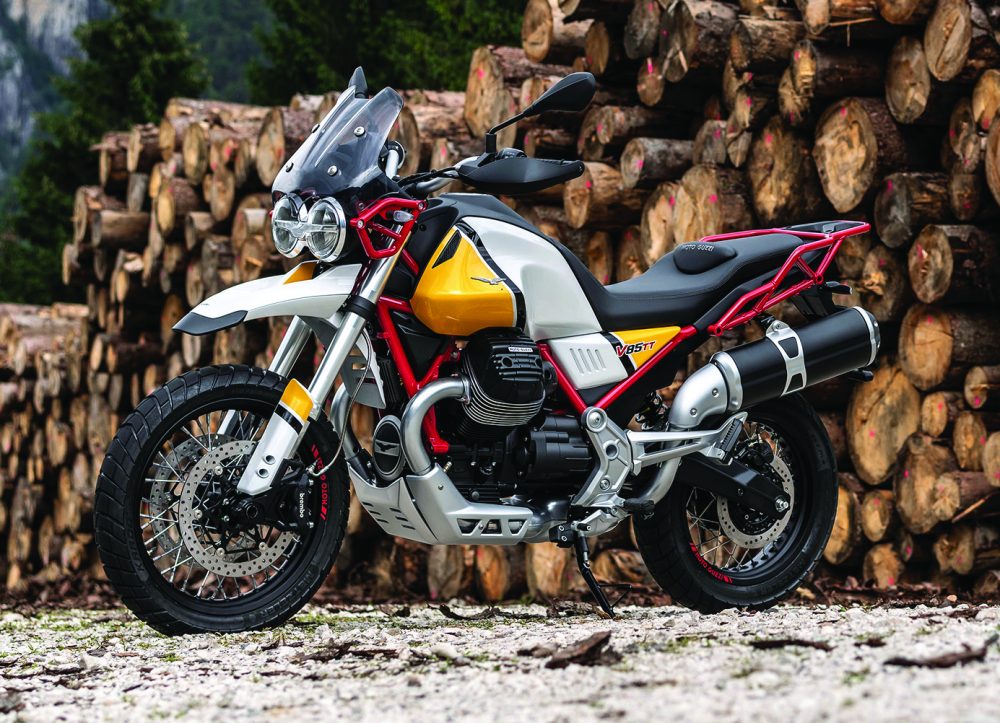
Moto Guzzi V85TT
They’re touring bikes that weigh less. They’re naked bikes with more wind protection, space for a pillion and massive panniers. They’re tall enough to see over cars and powerful enough to overtake whole strings of traffic in an instant. Big tanks often mean long stints between fuel stops, and heated grips and hand-guards make bad weather a non-issue. If your wallet is thick enough, you can even enjoy the very latest electronic gadgets – electronic suspension, cruise control, self-aiming cornering lights…the list is practically endless.
At the other end of the spectrum, those with less extravagant tastes can enjoy smaller, simpler, and, crucially, cheaper options. Tall seat heights can be an issue, though many manufacturers have begun offering lowered seats and suspension. They’re also not the prettiest bikes in the world, with styling having come at the very bottom of the list of priorities when the engineers were drawing up their plans.
Let’s face it, the BMW R1250GS is the benchmark here, even if you’ll end up losing it amongst the sea of nearly identical bikes at your local cafe. Many people opt for something else, just to be different, but you’d be doing yourself a disservice by ignoring it. Or you could go in the other direction, and try out a Kawasaki Versys 650. Cheap suspension, and the stock seat isn’t fantastic, but it’s cheap and utterly hilarious to ride fast. Try one.
Sports-Tourers
Your hardcore trackday enthusiast would probably describe a 2002 Honda Fireblade as a sports-tourer. It looks like a modern sportsbike, but has a more comfortable seat, higher clip-ons, space for a pillion and somewhere to strap luggage. I wonder if we’ll be making similar comparisons about our current razor-sharp race-replicas in 2030?
Sports tourers are, in essence, sports bikes that you could tour on without enduring crippling pain half-way through the first day. Riders who can’t stand the look of adventure tourers but can’t handle the riding position of a true sports bike for hours on end will delight in discovering that very few compromises are necessary as long as your preferred tarmac is publicly-owned.
Those compromises mean more weight, as stiffer frames are needed to carry luggage and passenger. Larger fuel tanks mean less time looking for petrol, and wider seats mean your backside won’t notice that you’re stopping less frequently. This, plus the more protective fairing, means that they’re always larger, heavier machines than the lithe super sports they visually ape. They’re not perfect: clip-ons, even raised ones, aren’t always comfortable for those short of arm, and limited steering lock can make low-speed manoeuvres challenging.
Of course, some people would argue that the line between sports tourers and some adventure tourers becomes blurred as the former becomes more upright and the latter grows more fairing. Hybrids definitely exist, and could arguably be the best of both worlds for those who aren’t as interested in the lifestyle imagery of either extreme.
The Kawasaki Z1000SX is the place to start here; it’s been a best seller since its inception, which means that the classifieds are full of options for the used buyer, and the latest model has had plenty of owner feedback steering its development. Change those horrible Dunlop tyres immediately though; feedback here is universally damning. The left-field choice in this case has to be the Yamaha Tracer 900GT; very much a hybrid machine, and very much a fantastic motorcycle, if you can get comfortable with the taller stance.
Tourers
So you like the weather protection and clean lines of a faired motorcycle, but have a lot of miles to cover. Also, you aren’t necessarily as interested in dragging your knee around the local hairpins when you arrive. Shuffle the priorities around, make comfort and luggage for two the ultimate goal and you end up with a full-sized touring bike. Chances are, in fact, that you’ll end up on a Honda Goldwing.
Practically inventing the format when it grew a full fairing in the 80’s and the bike that everyone points to as the stereotypical example even now, it characterises the concept better than any other motorcycle. Huge tank; massive, comfy seats; enormous fairing and cavernous luggage; and, finally, an oversized engine to haul its impressive weight around. This combination also scales down quite successfully, and it’s hard to spot the point at which you can tack the word “sports” on to the beginning of “tourer” as you move down in size.
I would argue that the tipping point is when the journey starts to matter more than the destination. If you reach the top of the B500 in the Black Forest and wish that your bike were lighter and more involving to ride, then you’ve gone too far in the touring direction. If you’re happy to look at the scenery as you entertain the wildlife with your on-board speaker system and don’t mind slowing down a mite for the corners, then you probably chose well.
While the Goldwing is the King, the truth is that you might want to start your search at the BMW K1600GT. Regularly updated, loaded with gadgets and with tremendous performance, it’ll surely get you to where you’re going quickly and in maximum comfort. The left-field choice here, depressingly, is another BMW – the R1200RT. Leaning dangerously close to the “sports” side, it provides a lighter-duty alternative and should definitely be sampled.
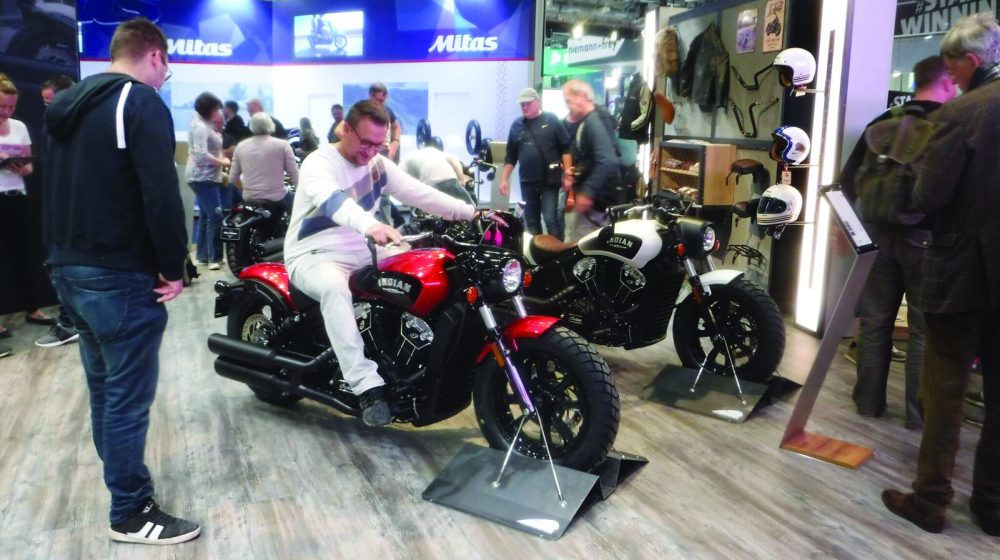
Indian Scout
Cruisers
It’s common that a genre is defined by a particular bike, but Cruisers are defined by a brand. Harley-Davidson has been making motorcycles for more than a century, and detractors would joke that their bikes haven’t changed much in that time. And from a certain angle, it’s true; cruisers are defined as much by their aesthetics just as other categories of motorcycle, but no other genre has had to make so many concessions in pursuit of its particular style.
In any case, most manufacturers decided not to wait and killed off their cruiser lines in the UK years ago, and only the recently-revived Indian remains as a real competitor. Broadly split into naked and semi-faired versions, cruisers are surprisingly similar to sportsbikes in that practicality and comfort takes second place to a primary focus: in this case, an aesthetic ideal.
A full-dress tourer will give you Goldwing-matching comfort, luggage capacity and unfortunately the weight to go along with the image. Lose the fairing and you’ve got a whole swathe of configurations to suit every taste, as long as you enjoy lots of exposed metal. Cruisers are heavy, slow, have limited ground clearance and suspension travel, but enjoy low seat heights and relaxed riding positions in exchange. They’re very much a matter of personal, even acquired, taste but if you don’t like it, you can always change it. Cruiser culture is inextricably enmeshed with the custom scene, something that Harley-Davidson has wholly embraced; their 2019 accessories catalogue is almost two inches thick…
It’s hard to recommend a particular model here, because the devil really is in the detail and personal taste is so much of a factor when shopping for cruisers. I’m very taken by the Harley-Davidson Sport-Glide, which matches the stripped-back cruiser aesthetic with a modicum of touring capability and an awesome engine. The left-field choice would be the Kawasaki Vulcan, with a water-cooled parallel-twin 650cc engine borrowed from the manufacturer’s own Versys & Ninja 650’s. Comfy, punchy, light and fun.
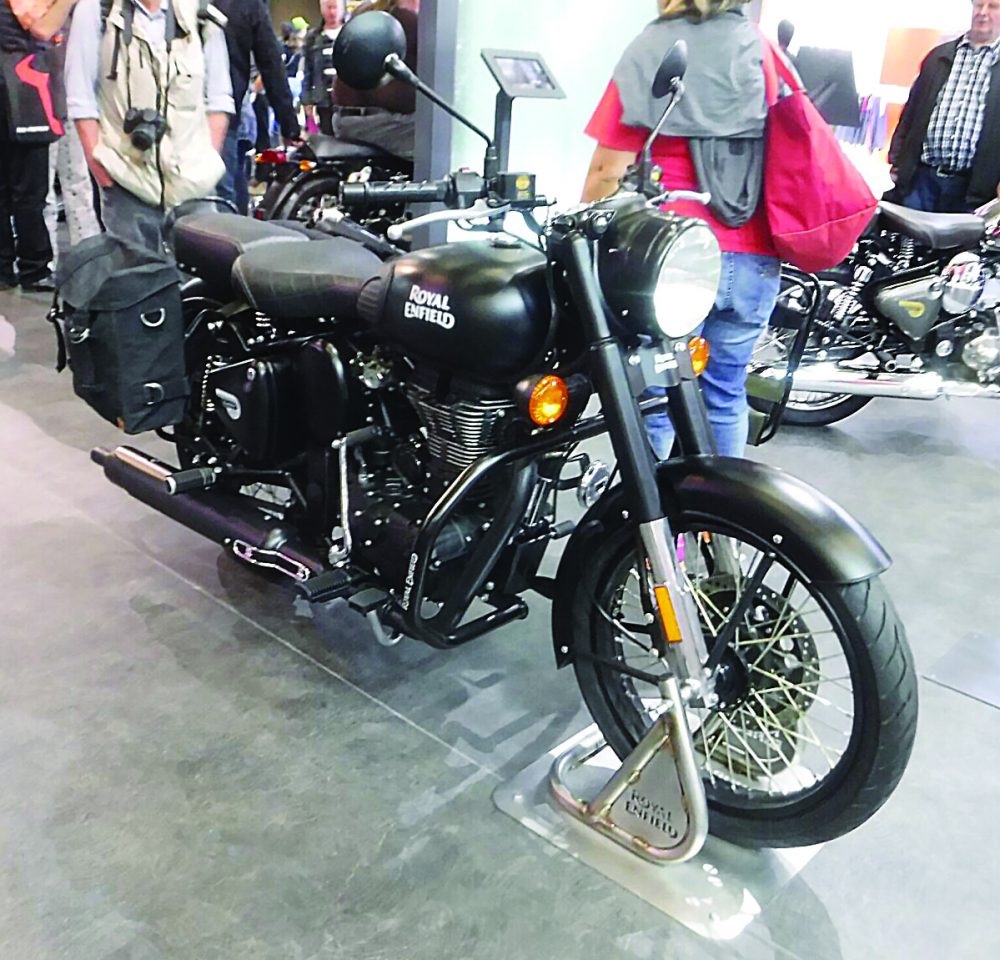
Royal Enfield Interceptor
Classics
Harley-Davidson should have been owning this segment, but their marketing department changes direction like an overloaded oil tanker. The explanations for the popularity of bikes that look and feel like those from fifty years ago are many and varied, but the numbers speak for themselves. Customers love the look, sound and feel of old bikes, but would find living with a genuine classic a real culture shock; modern interpretations of those motorcycles tend not to constantly leak oil and require riders to clean condensers and re-gap spark plugs at the side of the road.
This means that bikes that are still built like it’s the 1960’s – I’m looking at you, Royal Enfield – often don’t quite find the audience they hope for. Conversely, simple styling jobs on top of, otherwise modern, water-cooled nakeds fall similarly flat. And while, like with cruisers, actual performance takes a relaxed back seat to aesthetic priorities, we’ve reached a point in motorcycle development that the compromises are becoming less and less noticeable.
When power output, cornering capability, braking performance and even suspension take second fiddle to making the rider feel cool, the engineers are often left with little to work with. Steel tube frames, spoked wheels and classic-style engine casings are all heavier than their modern alternatives, dulling potential performance. But modern engineering is now so good that the results – even with these illogical handicaps – can be quite impressive. All that competing engineering costs money however – what look like very basic, no-frills motorcycles can frequently carry hefty price tags.
If the aesthetic appeals to you, just be aware of what you’re getting into and also be aware that compromises are going to be necessary. Choose well and you’ll find that you’re able to keep up with your riding buddies just fine on real roads and will look good doing it. It’s also a broad enough segment that you can probably find a classic that caters, at least somewhat, to your needs. There are sporty classics, touring classics and classics that will make a simple trip to the shops a memorable adventure.
While I have plenty of personal issues with the Triumph Bonneville T120, it is the segment-defining model. Impressive performance, despite its appearance; just make sure that you’re aware of the shortcomings and try one for yourself before buying. The left-field choice here would have to be Royal Enfield Interceptor; not yet available, admittedly, but a new UK-designed 650cc twin for around £5k could excuse an awful lot of sloppy welds.
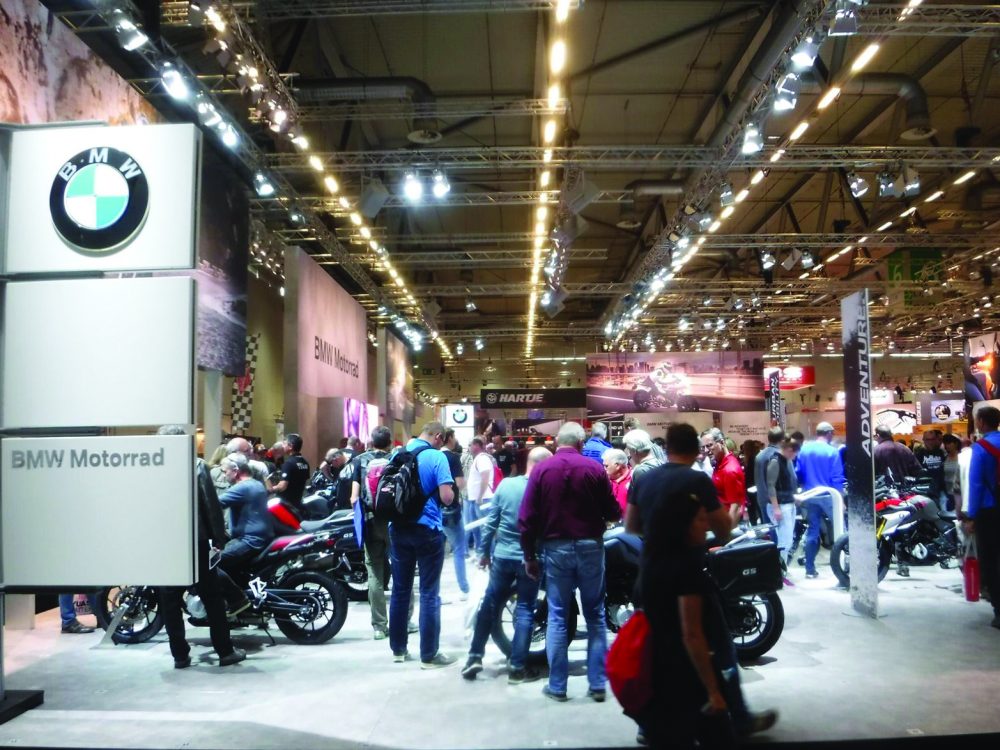
Something Else
Lest we forget, grouping motorcycles into genres like this is extremely subjective, and the previously mentioned grey areas between them mean that motorcycling is more of a multi-dimensional spectrum than a series of neatly-defined categories. I choose to think of them as points on a compass, extremes to refer to so that newcomers might understand the full width and breadth of the choices available to them. Gaps exist and can sometimes be filled by buying something close and then modifying it to more closely fit your particular needs.
But the most important thing is knowing what you want and why well in advance of when you start shopping. Yes, a particular bike may catch your eye aesthetically, but it’s your butt that’s got to sit in the seat and your wallet that has to pay for it. Figure out what you’re hoping to do with your new bike, taking into account what you did with your old bike and make sure that you’re not repeating old mistakes.
Note what is popular and find out why others like the bikes they do; their tastes and needs might not align with yours. When someone recommends something, consider the lens through which they are viewing it – few people will consciously admit to themselves that they bought the wrong bike, never mind admit it to others! Which is a long-winded way of saying that everyone should buy a Suzuki V-Strom 650, because it’s obviously perfect!
Nick Tasker
Originally published in Slipstream November 2018


